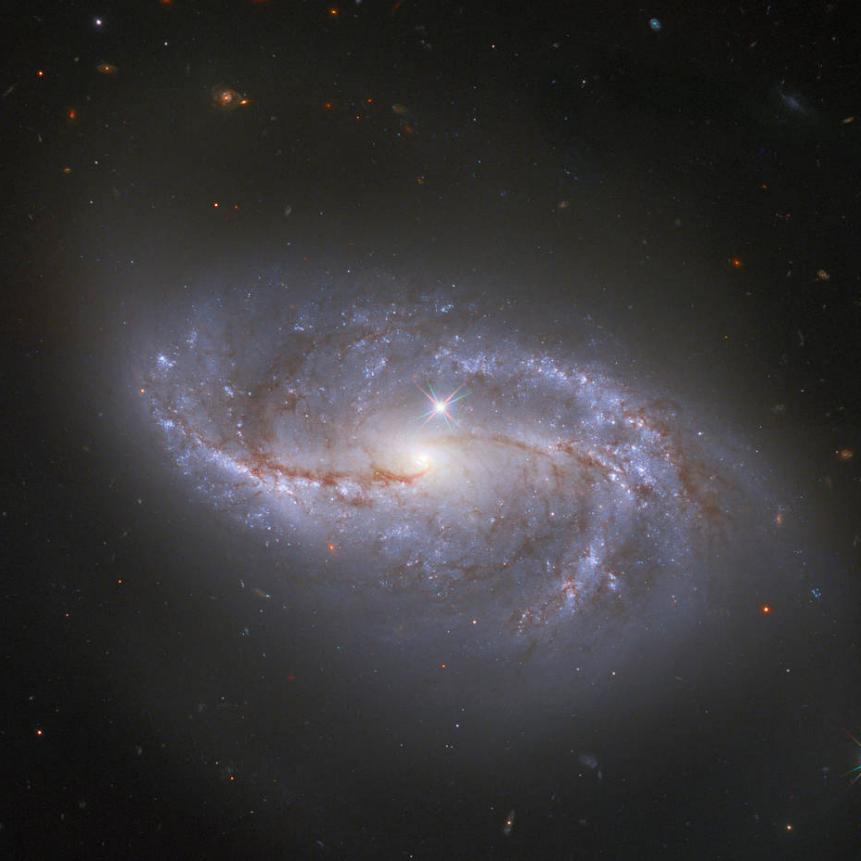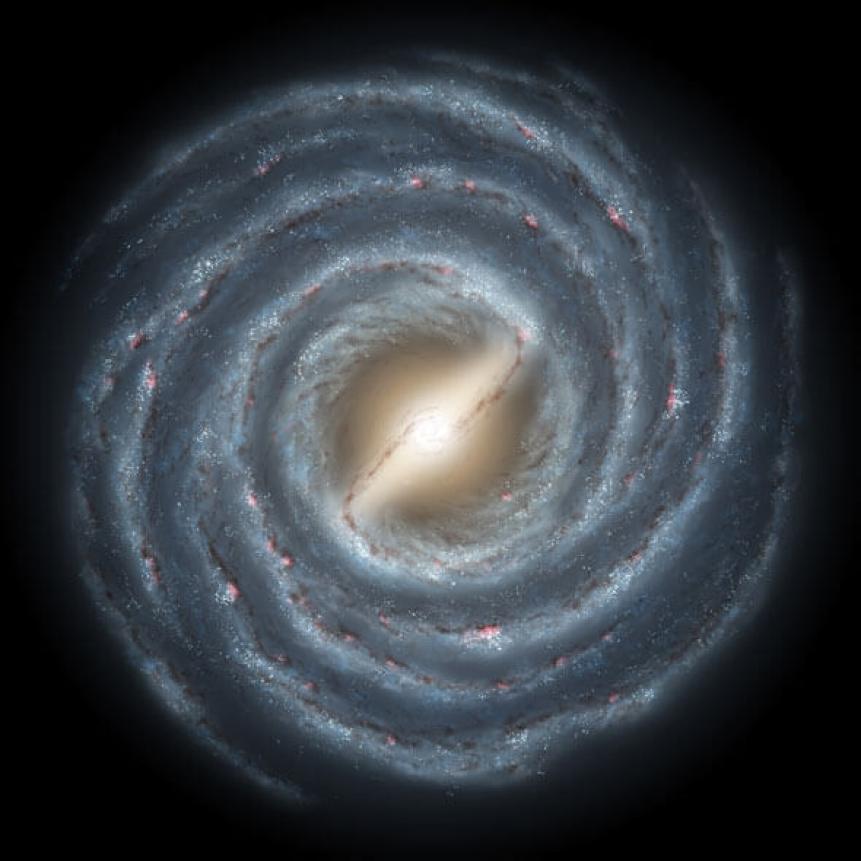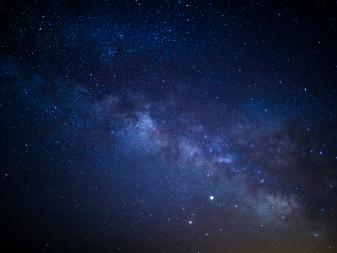
NASA
Anatomy Lesson: The Milky Way

The Milky Way is a giant, sprawling, beautiful spiral galaxy. It's also your home. Let's take a little tour.
Let's start with what the Milky Way is made of. From our vantage point here on the Earth, the Milky Way looks like a, well, milky band of diffused light stretching across the sky from horizon to horizon. That milky band comes from the light of countless billions of stars that are too far away to see individually - we only see their combined light.
The fact that the Milky Way appears as a band in our sky tells us something about the shape of our home galaxy. It's flat, like a pancake. When we look in the direction of the Milky Way, we're looking through all the batter of the pancake, all the stars that make up our galaxy. When we look in any other direction, we see a lot less batter – a lot fewer stars - and just clear sky.
The Milky Way galaxy is about 100,000 light years across but only 10,000 light years thick and is home to a few hundred billion stars. Besides the stars there are a few hundred billion - and maybe up to a trillion - planets, most of them floating freely in interstellar space, not connected to any particular star. There are also millions of clouds of gas, innumerable specs of interstellar dust, and a few million dead stellar remnants (like white dwarfs, neutron stars, and black holes) to round things out.

ESA/Hubble & NASA, A. Riess et al.
In Hubble photos, bright Milky Way stars will sometimes appear as pinpoints of light with prominent lens flares. A star with these features is seen in the lower right corner of the image, and another can be spotted just above the pale centre of the galaxy.
But all the normal matter in the galaxy makes up less than 20% of its mass. The vast majority of the mass of the Milky Way galaxy, just like every other galaxy, is made up of a substance called dark matter. Astronomers don't know what dark matter is made of, but we know it's there from its gravitational influence on everything else. In the case of the Milky Way, our own sun orbits the center of the galaxy at around 200 km/s. That's far faster than it should given the amount of visible matter in the galaxy - there has to be more than meets the eye to keep everything glued together.
Speaking of our sun, it sits about 25,000 light years away from the galactic core, on a small spur of a much larger spiral arm. The spiral arms are regions in our galaxy where the density of stars is slightly higher than average, but because these are regions of enhanced star formation there's a lot more bright blue stars than typical, making the arms stand out brightly.
The core itself is home to a supermassive black hole, known as Sagittarius A*, that weighs over 4 million times the mass of the sun. That sounds like a lot, but that's less than 1% of the entire mass of the Milky Way.

NASA/JPL
This is an illustration of our galaxy, the Milky Way. The Milky Way is an ancient galaxy that was born only a few hundred million years after the Big Bang.
All these stars, all these planets, all this complexity is what we call our home. Our galaxy sits millions of light years away from our nearest neighbor galaxy, the Andromeda, and it’s just one of hundreds of billions throughout the visible universe. But it's ours.
Dive Deeper into the Cosmos
Journey Through the Cosmos in an All-New Season of How the Universe Works
The new season premieres March 24 on Science Channel and streams on discovery+.




















